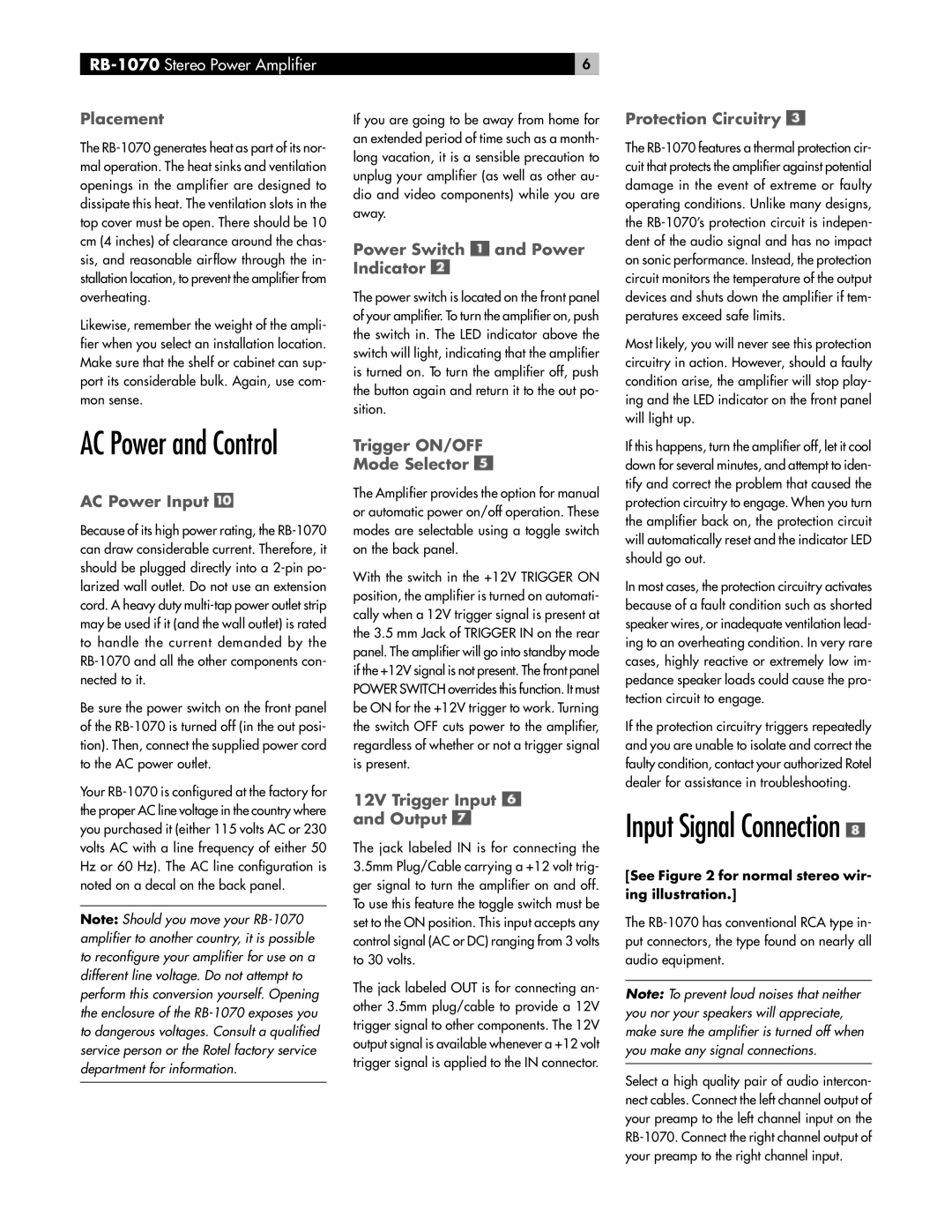
Placement
The
Likewise, remember the weight of the ampli- fier when you select an installation location. Make sure that the shelf or cabinet can sup- port its considerable bulk. Again, use com- mon sense.
AC Power and Control
AC Power Input 
Because of its high power rating, the
Be sure the power switch on the front panel of the
Your
Note: Should you move your
6
If you are going to be away from home for an extended period of time such as a month- long vacation, it is a sensible precaution to unplug your amplifier (as well as other au- dio and video components) while you are away.
Power Switch  and Power Indicator
and Power Indicator 
The power switch is located on the front panel of your amplifier. To turn the amplifier on, push the switch in. The LED indicator above the switch will light, indicating that the amplifier is turned on. To turn the amplifier off, push the button again and return it to the out po- sition.
Trigger ON/OFF
Mode Selector 
The Amplifier provides the option for manual or automatic power on/off operation. These modes are selectable using a toggle switch on the back panel.
With the switch in the +12V TRIGGER ON position, the amplifier is turned on automati- cally when a 12V trigger signal is present at the 3.5 mm Jack of TRIGGER IN on the rear panel. The amplifier will go into standby mode if the +12V signal is not present. The front panel POWER SWITCH overrides this function. It must be ON for the +12V trigger to work. Turning the switch OFF cuts power to the amplifier, regardless of whether or not a trigger signal is present.
12V Trigger Input  and Output
and Output 
The jack labeled IN is for connecting the 3.5mm Plug/Cable carrying a +12 volt trig- ger signal to turn the amplifier on and off. To use this feature the toggle switch must be set to the ON position. This input accepts any control signal (AC or DC) ranging from 3 volts to 30 volts.
The jack labeled OUT is for connecting an- other 3.5mm plug/cable to provide a 12V trigger signal to other components. The 12V output signal is available whenever a +12 volt trigger signal is applied to the IN connector.
Protection Circuitry 
The
Most likely, you will never see this protection circuitry in action. However, should a faulty condition arise, the amplifier will stop play- ing and the LED indicator on the front panel will light up.
If this happens, turn the amplifier off, let it cool down for several minutes, and attempt to iden- tify and correct the problem that caused the protection circuitry to engage. When you turn the amplifier back on, the protection circuit will automatically reset and the indicator LED should go out.
In most cases, the protection circuitry activates because of a fault condition such as shorted speaker wires, or inadequate ventilation lead- ing to an overheating condition. In very rare cases, highly reactive or extremely low im- pedance speaker loads could cause the pro- tection circuit to engage.
If the protection circuitry triggers repeatedly and you are unable to isolate and correct the faulty condition, contact your authorized Rotel dealer for assistance in troubleshooting.
Input Signal Connection 
[See Figure 2 for normal stereo wir-
ing illustration.]
The
Note: To prevent loud noises that neither you nor your speakers will appreciate, make sure the amplifier is turned off when you make any signal connections.
Select a high quality pair of audio intercon- nect cables. Connect the left channel output of your preamp to the left channel input on the
